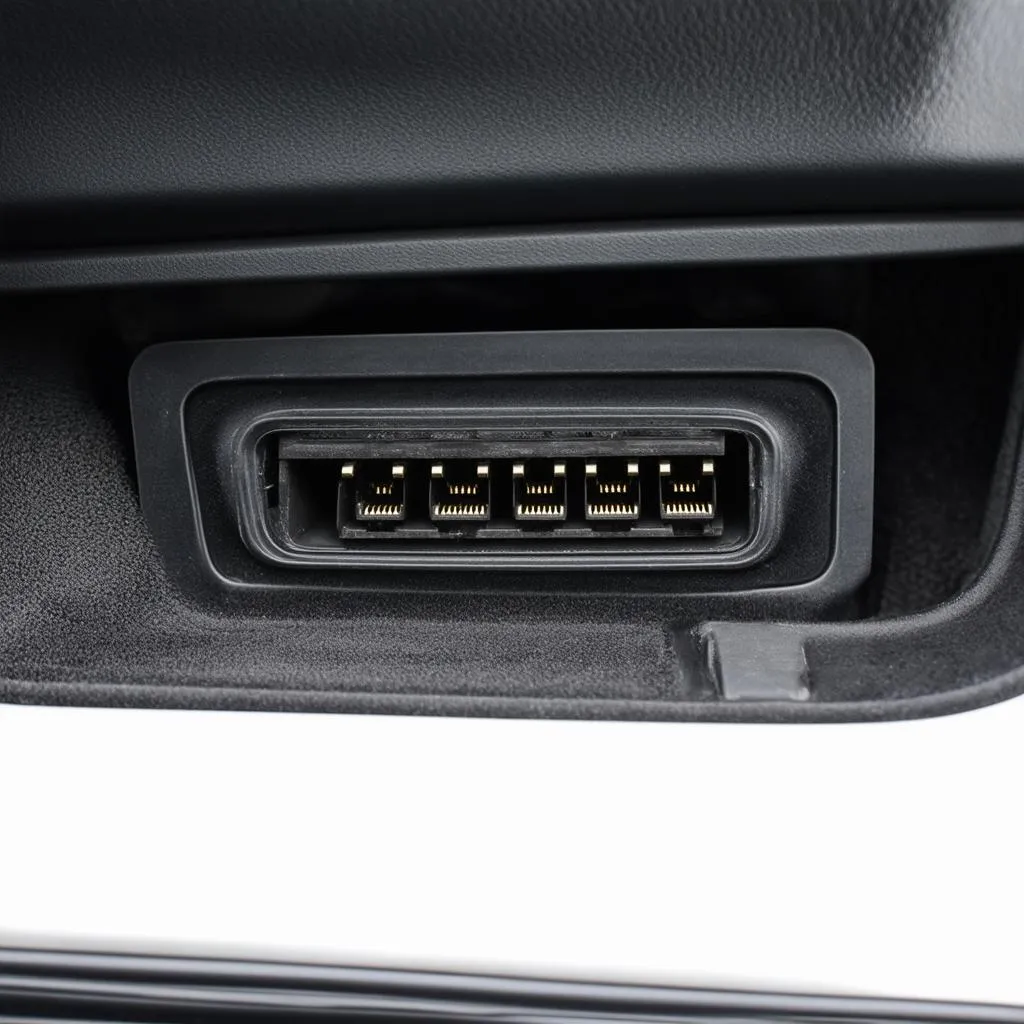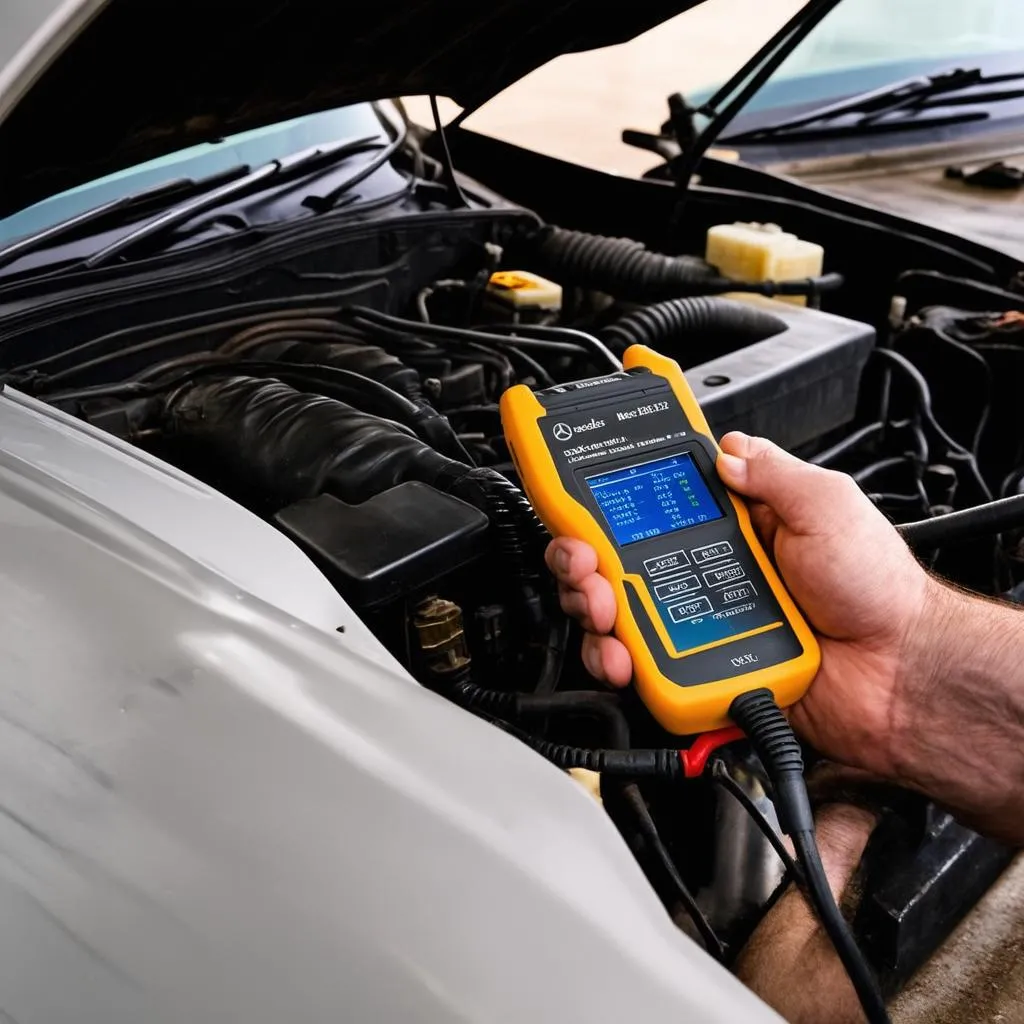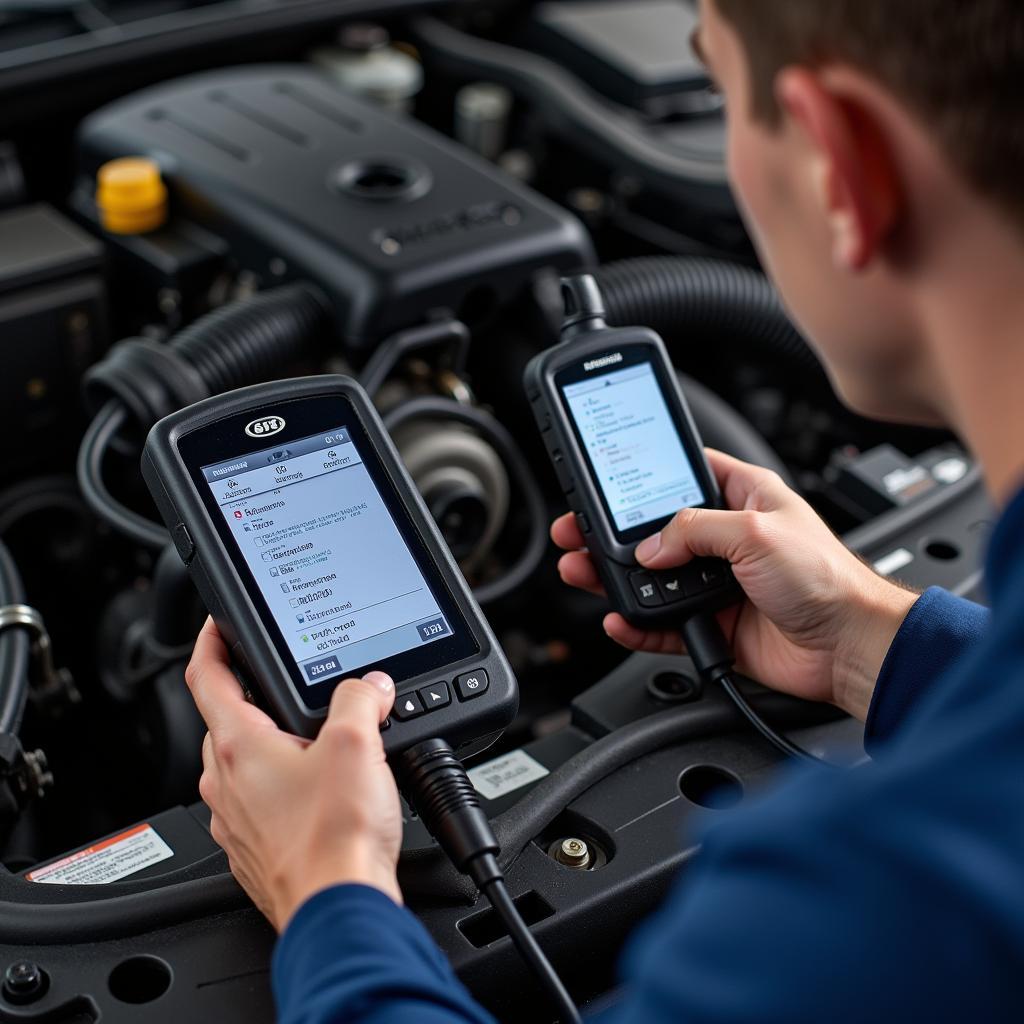The Mercedes-Benz W124, a true icon produced from 1984 to 1996, is known for its reliability and build quality. But even these stalwarts need a little TLC from time to time. As any seasoned mechanic knows, accurate diagnosis is the cornerstone of effective repair. That’s where a diagnostic tool Mercedes W124 comes into play. We’re talking about those essential pieces of kit that help you communicate with your W124’s onboard computer, decipher cryptic error codes, and get to the root of any issue.
Choosing the Right Diagnostic Tool for Your W124
The W124 generation predates the standardized OBD-II protocol common in modern cars. This means you’ll need a diagnostic tool specifically designed to interface with its older OBD-I system. Let’s break down some factors to consider when making your choice:
1. Functionality:
- Basic Code Readers: These entry-level tools are great for retrieving and clearing basic engine fault codes.
- Advanced Scanners: These offer a wider range of functions, such as viewing live data streams from various sensors, conducting actuator tests, and accessing specific control modules.
2. Compatibility:
- Year of Manufacture: Ensure the tool explicitly states compatibility with your W124’s model year, as communication protocols evolved within the OBD-I era.
- Model Variations: Certain tools might be tailored for specific W124 models (e.g., E-Class, S-Class) or engine types (diesel vs. gasoline).
3. User Interface:
- Display: A clear, easy-to-read display is crucial, especially when navigating through menus or interpreting complex data.
- Software: Consider whether PC connectivity and software updates are important to you. Some tools offer more advanced features or support for future updates.
Pro Tip: “Always check online reviews and forums for feedback from other W124 owners. Their experiences can provide valuable insights into the real-world performance and usability of different diagnostic tools.” – [David Miller, Automotive Diagnostics Expert, from his book “Decoding Your Ride”]
Common Diagnostic Procedures on a Mercedes W124
Here’s a peek at typical tasks you can perform using a diagnostic tool on your W124:
- Reading and Clearing Fault Codes: Identify and erase stored trouble codes related to the engine, transmission, airbags, ABS, and other systems.
- Live Data Monitoring: View real-time sensor readings, such as engine speed, coolant temperature, oxygen sensor voltage, and more. This aids in pinpointing intermittent faults or verifying component operation.
- Actuator Tests: Command components like fuel injectors, solenoids, or relays to activate. This helps isolate faulty components.
- Adaptation and Reset Procedures: Perform tasks like resetting service intervals, adapting throttle bodies, or bleeding ABS systems.
 Mercedes W124 Diagnostic Port
Mercedes W124 Diagnostic Port
FAQs: Diagnostic Tools for Mercedes W124
Q: Will a generic OBD-II scanner work on my W124?
A: It’s unlikely. Most generic OBD-II scanners won’t be compatible with the older OBD-I system used in the W124.
Q: Can I use a diagnostic tool to reset the service light on my W124?
A: Yes, many diagnostic tools specifically designed for the W124 offer service light reset functionality.
Q: I’m getting an error code related to the ABS system. What should I do?
A: Consult your diagnostic tool’s documentation or a W124 repair manual for guidance on interpreting the specific ABS code.
 Mechanic Using Diagnostic Tool on W124
Mechanic Using Diagnostic Tool on W124
Cardiagtech: Your Source for Quality Diagnostic Solutions
When choosing a diagnostic tool for your Mercedes W124, it’s essential to partner with a reputable provider. Cardiagtech offers a wide range of diagnostic solutions tailored for various Mercedes models, including the W124.
Conclusion
A reliable diagnostic tool is an invaluable asset for any W124 owner or mechanic. By investing in the right tool, you’re empowering yourself to diagnose issues accurately, save on costly repairs, and keep your classic Mercedes running smoothly for years to come.
Need further assistance in choosing the perfect diagnostic tool for your W124? Contact the experts at CARDIAGTECH – we’re here to help!


